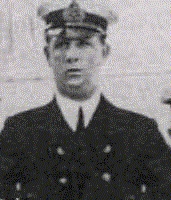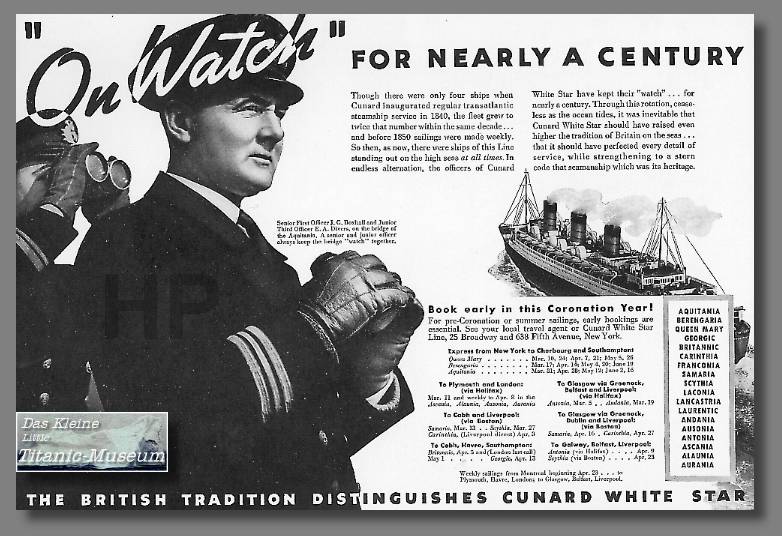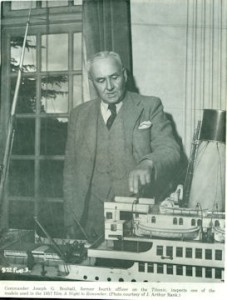Titanic's Reliable Fourth Officer
/At age 15, Joseph Groves Boxhall of Yorkshire couldn’t wait to begin a life at sea like his grandfather, father, and uncle before him. He became an apprentice with the William Thomas Line, and joined ships sailing for ports in Russia, the Mediterranean, North and South America, and Australia. By 1907, at the age of 23, Boxhall earned his Extra-Masters Certificate and joined the White Star Line. As Sixth Officer on the Oceanic, he met another future Titanic officer, Charles Lightoller. Then, after a year aboard WSL’s Arabic on its North Atlantic run, he signed on as Fourth Officer for RMS Titanic. Once at sea, Boxhall’s duties included regular watches, navigation, and assisting passengers and crew.

Officer Joseph Boxhall
Aboard the Titanic on the night of April 14, 1912, Officer Boxhall was having a cup of tea in his cabin near the bridge. He heard the sound of the three warning bells from the crow’s nest and went to see what happened. As he reached the bridge, Captain Smith instructed him to go below and check the forward part of the ship for damage. He didn’t find anything wrong at first, and told a third class passenger holding a chunk of ice to return to bed. Very soon, however, another crewman reported damage to the forward compartments, and the postal clerk came to report that the mail room was quickly filling with water.
Boxhall’s next orders were to determine Titanic’s exact position. As the passengers made their way to the upper decks and the lifeboats were uncovered, he and Quartermaster George Rowe fired distress rockets from the ship’s rail. They used a Morse Lamp as well, in an attempt to signal the ship they saw in the distance, but to no avail.
When Lifeboat 2 was ready for lowering at 1:45 am, Boxhall was put in charge. The following is a transcript of a radio interview as he later described his experience in the lifeboat:
“The sea was perfectly smooth when we left the ship. Every star in the heavens was visible, but there was no moon. So it was dark. And then, well everything was very peaceful no wind and no moon, stars, smooth water, until after about an hour then the wind got up and there was a little sea. For a long time we didn't move the boat, when we laid off on the Starboard side. You could see by the ah, by the arrangements of the lights, all the lights were burning and you could see that she was going down. You could see that her stern was, was getting pretty low in the water. She was certainly going down, there was no doubt about it then. And, ah, well we pulled, we got away clear of the ship and we just laid on the oars until eventually they they, ah realized that she'd gone and we heard all the screams. We couldn't do anything. And, ah, the screams went on for some considerable time. I can't remember the time when she sank, but it was in the early hours.”
Following rescue, Joseph Boxhall testified at the American and British inquiries into the disaster. He returned to England, served aboard the Adriatic, then joined the Royal Naval Reserve before serving his country during World War I. He married after the war, then continued his career aboard several ships before his retirement in 1940. He acted as technical advisor during the filming of A Night to Remember in 1958.

Advertisement featuring Officer Boxhall
He had suffered from pleurisy periodically since Titanic’s sinking, and his health deteriorated rapidly in the 1960s. He died in 1967 at age 83, and requested that his ashes be scattered over the location he had calculated the night the ship went down.

Photo credits: Encyclopedia Titanica
